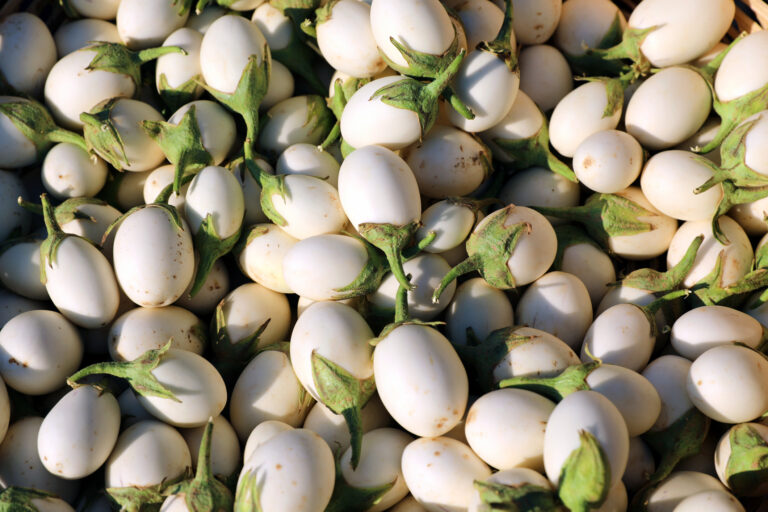The intriguing origins of the unusual vegetable eggplant, including how it gained its name
Eggplants, commonly recognized as long, purple fruits, are renowned for their diverse applications in savory dishes. From grilling to combining with tomato sauce and cheese or incorporating them into casseroles, these versatile fruits have found their way into numerous culinary traditions. However, amidst their popularity, the peculiar name “eggplant” raises questions about their appearance.
A recent viral photo on Reddit has shed light on the origins of the intriguing name “eggplant.” While the common eggplant may not resemble an actual egg, the image reveals a distinct variety that remarkably looks like one. This fascinating revelation has sparked conversations and fostered a newfound understanding of the fruit’s unique vocabulary.
Diving deeper into the world of eggplants, we discover various shapes and colors, including white and purple varieties. White eggplants, also known as white aubergines, exhibit a creamy white hue in contrast to the deep purple color most people are familiar with. It is worth noting that white eggplants are not exclusively small; they can also grow longer, just like their purple counterparts. Similarly, purple eggplants can manifest in smaller, rounder forms. The diverse range of eggplant sizes and colors underscores the versatility of this fantastic fruit.
Raw eggplants possess a slightly bitter taste and a tough, spongy texture. However, once cooked, they excel at absorbing the flavors of accompanying ingredients, making them ideal for various culinary preparations. Grilling, roasting, sautéing, frying, or baking—eggplants lend themselves well to these cooking methods, allowing them to complement dishes with light sauces or delicate flavors. However, it is crucial to avoid overcooking eggplants, as they can become overly soft and lose their appeal.
Specialty Produce describes white eggplants as having a “fruity and mild” flavor, with cooked white eggplant being “warm” and “mellow.” Due to their thicker skin, peeling white eggplants before cooking or consuming them is advisable. On the other hand, purple eggplants possess thinner skin, making them easier to eat without peeling.

While white eggplants may not be as ubiquitous as their purple counterparts, they can still be found in specialty markets or online seed catalogs for those intrigued by the prospect of growing them at home. Their unique flavor and distinctive appearance offer an exciting alternative to the more widely known purple variety.
The history of eggplants stretches back centuries, with the fruit’s first mention dating back to 544 in a Chinese agricultural book. Interestingly, European farmers in the 1700s bestowed the name “eggplant” upon this fruit due to its resemblance to small white or yellow eggs, which evoked thoughts of goose or duck eggs.
The revelation that eggplants can resemble actual eggs may come as a surprise to many. Please express your ideas and reactions in the comments below. Let us celebrate eggplants’ remarkable versatility and intriguing nature as they continue to captivate our palates and inspire culinary creativity.
